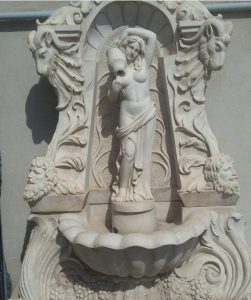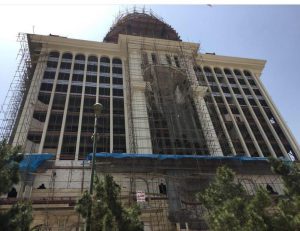Curtain wall types

Curtain walls are a popular form of building enclosure that are commonly used in modern architecture. These structures consist of thin, lightweight panels that are attached to a building’s frame, and they provide a number of benefits including energy efficiency, weather protection, and aesthetic appeal. There are several different types of curtain walls, each with its own unique characteristics and advantages. In this article, we will explore some of the most common types of curtain walls and discuss their key features.
Stick-built Curtain Walls
The most traditional and widely-used type of curtain wall is the stick-built system. This type of curtain wall is assembled on site, using individual components that are installed piece by piece. The components typically include mullions, transoms, glass, and sealants. Stick-built curtain walls are often used in large commercial buildings, as they offer a high level of flexibility and can be customized to fit a wide range of building designs.
One of the key advantages of stick-built curtain walls is that they are relatively easy to install, and they can be adjusted on site to account for any unexpected changes in the building’s structure. Additionally, they offer a high degree of design flexibility, as architects can specify different materials, finishes, and colors to create a unique look for each building. However, stick-built systems can be time-consuming to install, and they require skilled labor and careful coordination to ensure that the panels are properly aligned and sealed.

Unitized Curtain Walls
Unitized curtain walls are pre-assembled off-site, with each panel consisting of several individual components that are pre-glazed and sealed. These panels are then transported to the building site and installed as complete units. This approach offers several advantages over stick-built systems, including faster installation times, reduced labor costs, and improved quality control.
Unitized curtain walls are typically used in large commercial buildings, as they can be customized to fit a wide range of building designs. Additionally, they are ideal for buildings in dense urban areas where space is at a premium, as they can be assembled off-site and transported to the building site as complete units. However, unitized systems can be more expensive than stick-built systems, and they may not be suitable for buildings with complex or irregular designs.
Point-supported Glass Curtain Walls
Point-supported glass curtain walls are a popular choice for high-end commercial and residential buildings, as they offer a sleek, modern look that is unmatched by other types of curtain walls. These systems consist of large glass panels that are suspended from cables or rods, with each panel attached to the cables at several points. The panels are typically supported by custom-designed steel or aluminum brackets that are attached to the building’s structure.
One of the key advantages of point-supported glass curtain walls is that they provide an unobstructed view of the surrounding environment, as there are no mullions or transoms to block the view. Additionally, they offer a high level of design flexibility, as architects can specify different types of glass and custom bracket designs to create a unique look for each building. However, point-supported glass systems can be more expensive than other types of curtain walls, and they require careful attention to detail during installation to ensure that the panels are properly aligned and supported.
Cable-net Curtain Walls
Cable-net curtain walls are a unique type of curtain wall that is characterized by its large-scale, open design. These systems consist of a network of steel cables that are attached to the building’s structure, with glass panels suspended between the cables. The cables are typically tensioned to create a stable, self-supporting structure that can withstand wind and seismic loads.
One of the key advantages of cable-net curtain walls is their ability to create a light, airy atmosphere in the building’s interior. Additionally, they offer a high level of design flexibility, as architects can specify different types of glass and cable configurations to create a unique look for each building. Cable-net curtain walls are often used in large atriums or public spaces, as they provide an eye-catching focal point that can draw visitors into the building.
However, cable-net systems can be more expensive than other types of curtain walls, and they require careful design and engineering to ensure that they are structurally sound. Additionally, the installation process can be complex, as each cable and glass panel must be precisely positioned and tensioned to create a stable, self-supporting structure.
Structural Glazed Curtain Walls
Structural glazed curtain walls are a type of curtain wall that is characterized by its minimalistic design and clean lines. These systems consist of large glass panels that are held in place by structural silicone sealants, with no visible mullions or transoms. The glass panels are typically attached to the building’s structure using custom-designed aluminum or steel brackets.
One of the key advantages of structural glazed curtain walls is their ability to create a seamless, uninterrupted view of the surrounding environment. Additionally, they offer a high level of design flexibility, as architects can specify different types of glass and bracket designs to create a unique look for each building. However, structural glazed systems can be more expensive than other types of curtain walls, and they may not be suitable for buildings in areas with high wind or seismic loads.
Stone-clad Curtain Walls
Stone-clad curtain walls are a type of curtain wall that is characterized by its use of natural stone cladding. These systems consist of large stone panels that are attached to a substructure made of steel or aluminum, with the stone panels held in place by custom-designed brackets. The stone cladding can be made of a variety of materials, including granite, marble, limestone, and sandstone.
One of the key advantages of stone-clad curtain walls is their ability to create a natural, organic look that is well-suited to buildings in natural settings or historical districts. Additionally, they offer a high level of durability and resistance to weathering, as natural stone is highly resistant to water and wind erosion. However, stone-clad systems can be more expensive than other types of curtain walls, and they require careful attention to detail during installation to ensure that the stone panels are properly aligned and supported.
Conclusion
Curtain walls are an important element of modern architecture, providing a range of benefits including energy efficiency, weather protection, and aesthetic appeal. There are several different types of curtain walls, each with its own unique characteristics and advantages. Stick-built systems offer a high degree of design flexibility, while unitized systems are faster to install and offer improved quality control. Point-supported glass systems provide an unobstructed view of the surrounding environment, while cable-net systems create a light, airy atmosphere. Structural glazed systems create a seamless, uninterrupted view, and stone-clad systems offer a natural, organic look. By understanding the key features of each type of curtain wall, architects can select the best option for their building design and create a striking, functional, and durable building envelope.
Curtain wall types
Curtain wall types
Curtain wall types

